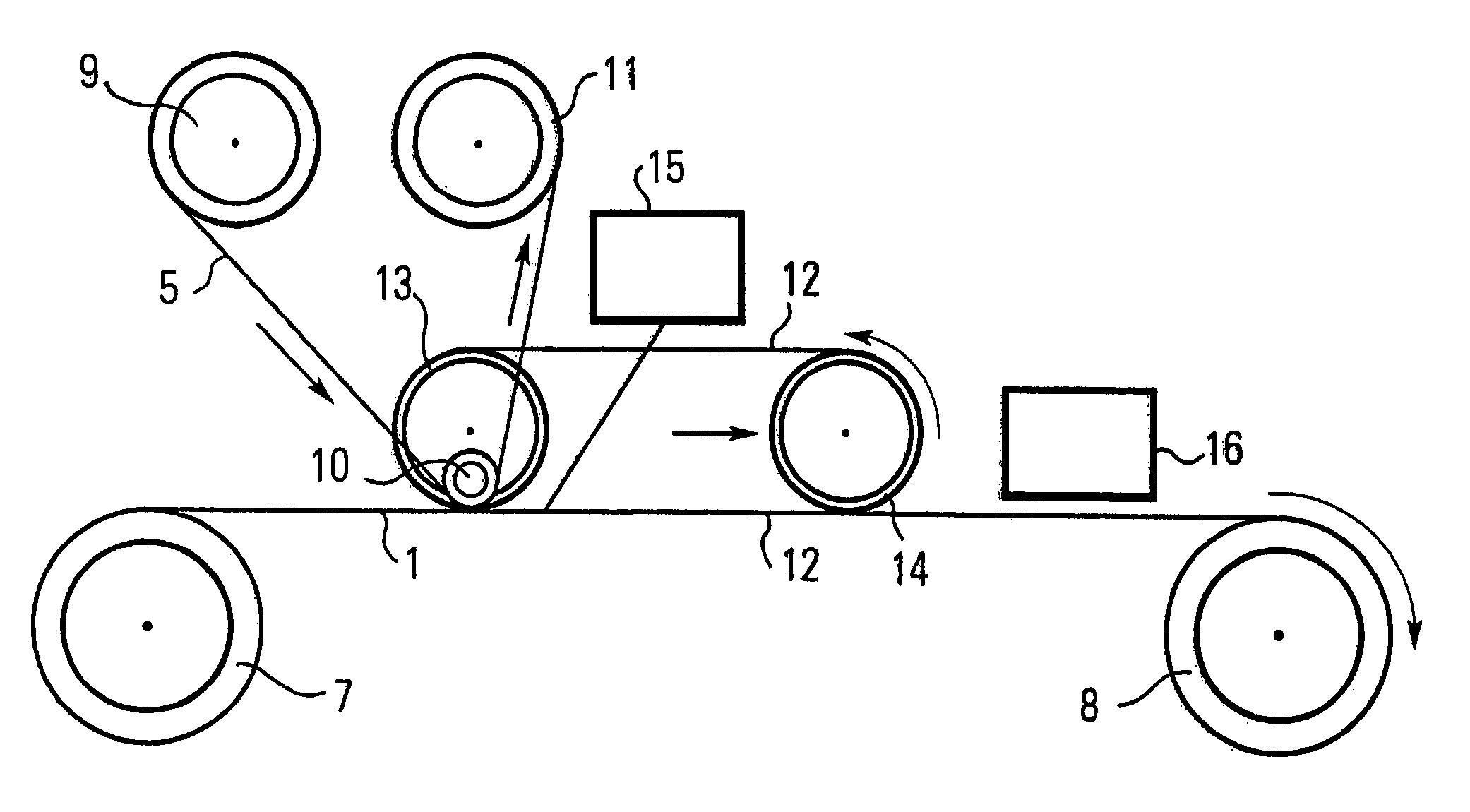Method for connecting microchips to an antenna arranged on a support strip for producing a transponder
a technology of microchips and antennas, applied in the direction of decorative surface effects, resistance welding apparatus, decorative arts, etc., can solve the problem of significant increase in manufacturing speed
- Summary
- Abstract
- Description
- Claims
- Application Information
AI Technical Summary
Benefits of technology
Problems solved by technology
Method used
Image
Examples
Embodiment Construction
[0017]FIG. 1 shows a first carrier tape 1 onto which coils 2 have been applied as antennas. Here, antennas manufactured by electroplated deposition are involved. The coils 2 exhibit two terminals 3 for a chip module.
[0018]These chip modules 4 are shown in FIG. 2. They are held closely one behind the other on a second carrier tape 5. The chip modules are packaged by a preceding bonding process into a chip case shown in FIG. 2. This case exhibits two galvanised terminal pads 6, the spacing of which corresponds to the terminals of the rectangular coils 2.
[0019]FIG. 3 shows a carrier tape 1 with a rectangular coil 2 which has already been complemented with a chip module 4. The chip module 4 has been soldered to the terminals 3 through its terminal pads 6.
[0020]In the following the manufacturing method is explained in more detail based on FIG. 4.
[0021]The first carrier tape 1 is rolled onto an input spool 7 and is unrolled from it and wound onto a finish spool 8 after the connection proc...
PUM
| Property | Measurement | Unit |
|---|---|---|
| speed | aaaaa | aaaaa |
| electrical connection | aaaaa | aaaaa |
| size | aaaaa | aaaaa |
Abstract
Description
Claims
Application Information
 Login to View More
Login to View More - R&D
- Intellectual Property
- Life Sciences
- Materials
- Tech Scout
- Unparalleled Data Quality
- Higher Quality Content
- 60% Fewer Hallucinations
Browse by: Latest US Patents, China's latest patents, Technical Efficacy Thesaurus, Application Domain, Technology Topic, Popular Technical Reports.
© 2025 PatSnap. All rights reserved.Legal|Privacy policy|Modern Slavery Act Transparency Statement|Sitemap|About US| Contact US: help@patsnap.com



